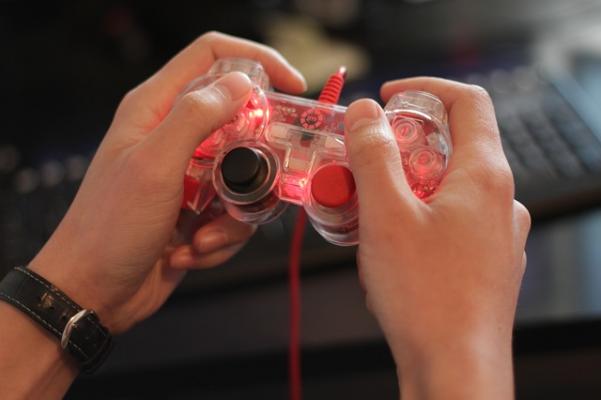
Brain scans from nearly 200 adolescent boys provide evidence that the brains of compulsive video game players are wired differently. Chronic video game play is associated with hyperconnectivity between several pairs of brain networks. Some of the changes are predicted to help game players respond to new information. Other changes are associated with distractibility and poor impulse control. The research, a collaboration between the University of Utah School of Medicine, and Chung-Ang University in South Korea, was published online in Addiction Biology on Dec. 22, 2015.
“Most of the differences we see could be considered beneficial. However the good changes could be inseparable from problems that come with them,” said senior author Jeffrey Anderson, M.D., Ph.D., associate professor of neuroradiology at the University of Utah School of Medicine.
Those with Internet gaming disorder are obsessed with video games, often to the extent that they give up eating and sleeping to play. This study reports that in adolescent boys with the disorder, certain brain networks that process vision or hearing are more likely to have enhanced coordination to the so-called salience network. The job of the salience network is to focus attention on important events, poising that person to take action. In a video game, the enhanced coordination could help a gamer to react more quickly to the rush of an oncoming fighter. And in life, to a ball darting in front of a car, or an unfamiliar voice in a crowded room.
“Hyperconnectivity between these brain networks could lead to a more robust ability to direct attention toward targets, and to recognize novel information in the environment,” said Anderson. “The changes could essentially help someone to think more efficiently.” One of the next steps will be to directly determine whether the boys with these brain differences do better on performance tests.
More troublesome is an increased coordination between two brain regions, the dorsolateral prefrontal cortex and temporoparietal junction, a change also seen in patients with neuropsychiatric conditions such as schizophrenia, Down’s syndrome, and autism. Hyperconnectivity between the two regions is also observed in people with poor impulse control. “Having these networks be too connected may increase distractibility,” said Anderson. At this point it’s not known whether persistent video gaming causes rewiring of the brain, or whether people who are wired differently are drawn to video games.
According to Doug Hyun Han, M.D., Ph.D., professor at Chung-Ang University School of Medicine and adjunct associate professor at the University of Utah School of Medicine, this research is the largest, most comprehensive investigation to date of brain differences in compulsive video game players. Study participants were from South Korea, where video game playing is a popular social activity, much more than in the United States. The Korean government supports his research with the goal of finding ways to identify and treat addicts.
Researchers performed magnetic resonance imaging on 106 boys between the ages of 10 to 19 who were seeking treatment for Internet gaming disorder, a psychological condition listed in the Diagnostic and Statistical Manual of Mental Disorders (DSM-5) as warranting further research. The brain scans were compared to those from 80 boys without the disorder, and analyzed for regions that were activated simultaneously while participants were at rest, a measure of functional connectivity.
The team analyzed activity in 25 pairs of brain regions, 300 combinations in all. Specifically, boys with Internet gaming disorder had statistically significant, functional connections between the following pairs of brain regions:
- Auditory cortex (hearing) - motor cortex (movement)
- Auditory cortex (hearing) - supplementary motor cortices (movement)
- Auditory cortex (hearing) - anterior cingulate (salience network)
- Frontal eye field (vision) - anterior cingulate (salience network)
- Frontal eye field (vision) - anterior insula (salience network)
- Dorsolateral prefrontal cortex - temporoparietal junction
“Brain connectivity and psychiatric comorbidity in adolescents with Internet gaming disorder” was published in Addiction Biology online on December 22, 2015. In addition to Anderson and Han, the authors are Perry Renshaw from the University of Utah School of Medicine, and Sun Mi Kim and Sujin Bae from Chung-Ang University. The research was supported by a grant from the Korea Creative Content Agency
For more information: http://healthsciences.utah.edu/


 December 15, 2025
December 15, 2025 









